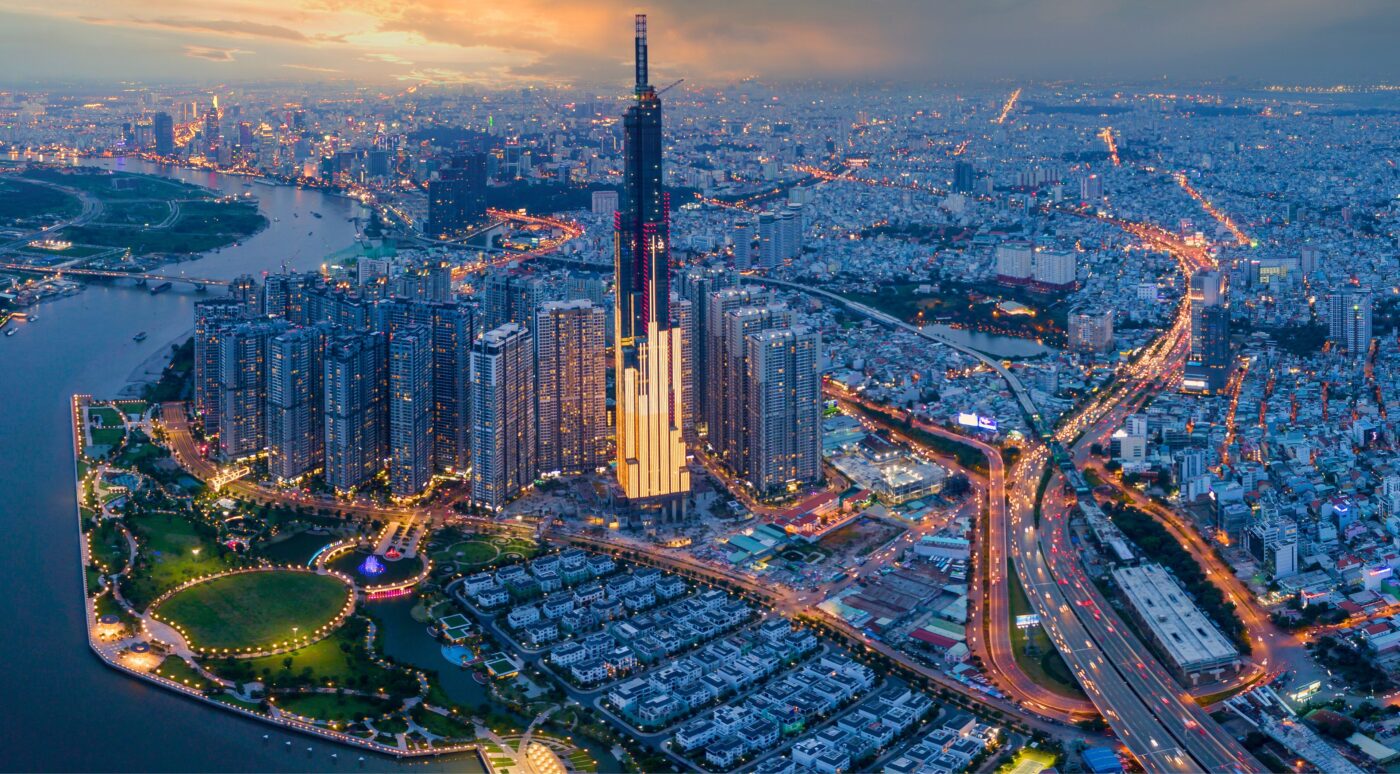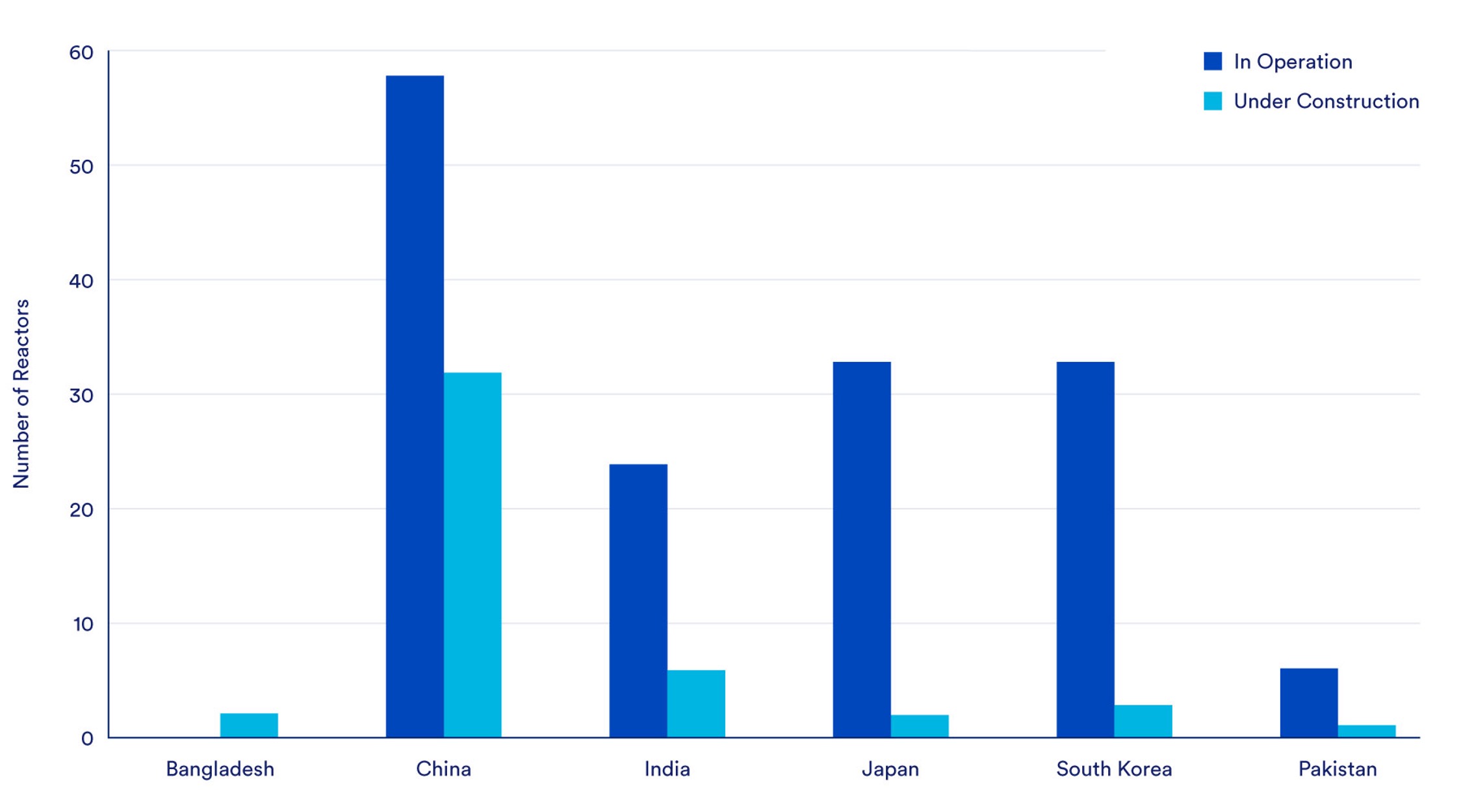
Decarbonizing the Asia-Pacific: Why the Asian Development Bank should start funding nuclear energy
The Asia-Pacific is home to some of the world’s fastest growing economies. Energy demand is expected to rise at least a quarter by 2050, yet the region remains highly reliant on fossil fuels for its economy. Decarbonizing the region is a major challenge, but not insurmountable – especially with financial support.
Multilateral development banks (MDBs) play a critical role in supporting development in emerging economies. The Asian Development Bank (ADB), headquartered in the Philippines, provides loans, grants, and policy support to developing countries in the region. Its 2021 Energy Policy prioritizes improving access to “reliable, affordable, low-carbon energy” by funding clean energy technologies and projects, including hydro, solar, wind, storage, and hydrogen.
But one option is excluded from ADB’s portfolio: nuclear energy. ADB cites “risks related to nuclear proliferation, waste management and safety issues, and very high investment costs” in banning funding for nuclear energy projects. The World Bank had a similar long-standing ban, one it has recently lifted after urging from its largest shareholders and the International Atomic Energy Agency (IAEA).
Many countries in the Asia-Pacific are now eyeing nuclear energy as a clean, firm, and dispatchable source with low variability. China has 30+ reactors under construction, more than any country in the world. Bangladesh is building its first nuclear power plant, while several countries in Central Asia and Southeast Asia have approved plans or are taking steps to build commercial nuclear energy programs.
Figure 1. Nuclear reactors in operation and under construction, Asia-Pacific.

Source: World Nuclear Association. (2025, June 17). Asia’s nuclear energy growth. World Nuclear Association. https://world-nuclear.org/information-library/country-profiles/others/asias-nuclear-energy-growth
Evidently, nuclear energy is not new to Asia. But other emerging economies in the region have also tried to implement nuclear energy programs and failed due to lack of financial capability. With economic development and population growth in the Asia-Pacific expected to continue over the next few decades, the demand for more clean firm energy sources is clear. MDBs can play a critical role in unlocking the potential of all available technologies for decarbonization – including nuclear energy.
Nuclear energy: A tool for development
Nuclear energy has played a significant role in some of Asia’s most advanced economies. China has the second largest economy and nuclear energy fleet in the world, primarily servicing its highly populated coastal areas, while Japan is now revitalizing its once-robust nuclear power industry that generated up to 30% of its electricity prior to 2011. South Korea is often held as a model of rapid industrialization: transforming from a developing, agriculture-based economy to a high-income industrialized nation within a few decades. The South Korean government made nuclear energy central to its broader national strategy, guaranteeing low-cost reliable electricity to develop its industrial economy.
In the beginning, Korea could not finance capital-intensive nuclear power projects by itself. Its first reactors were built by foreign firms, funded by loans from international financial institutions like the Export-Import Bank of the United States. Over time, it developed local expertise to design and build nuclear reactors, funded by economic gains from earlier projects.
For emerging economies, the biggest barriers to nuclear energy are financing and expertise. ADB can help them overcome both, after which they will be more able to sustain this development themselves – just as international support once helped jumpstart South Korea’s nuclear industry.
Opportunities for impact
While some Asian countries have succeeded in implementing nuclear energy programs, many others have come close but failed due to insufficient financing. These attempts represent critical opportunities for ADB to support development goals in the region.
The Ninh Thuận Nuclear Power Plants in Vietnam and the Bataan Nuclear Power Plant in the Philippines are two such examples.
Vietnam: Ninh Thuận Nuclear Power Plant 1 and 2
In 2009, the Vietnamese government approved plans to build its first two nuclear plants in Ninh Thuận province: one to be built by Russia’s state-owned enterprise, Rosatom, and another by the Japanese Atomic Power Company. These plans were abandoned in 2016, citing “economic reasons and not […] any technological considerations.” Meanwhile, per capita electricity consumption has almost doubled in the last ten years, while fossil fuels continue to supply 80% of the country’s energy. As a result, the project was reapproved in 2024, targeting completion by 2030. Such an ambitious timeline would require foreign aid, with Vietnam now exploring partnerships with South Korea, France, the US, Russia, and Japan. ADB could help fund this project and produce tangible results by the end of the decade – if it lifts its ban.
The Philippines: Bataan Nuclear Power Plant
Just 50 miles from ADB’s headquarters, Southeast Asia’s first nuclear power plant lies untouched yet intact. The Philippines built the Bataan Nuclear Power Plant as a response to the 1970s oil crisis, funded by loans from foreign banks. Due to a change in public sentiment, the plant was never operated after its completion. Feasibility studies conducted in 2009 and 2017 to refurbish the plant have not led to any action due to costs. With 95% of the population connected to the grid and fossil fuels accounting for 87% of the country’s energy consumption, interest in nuclear energy and the revival of the plant has been renewed, resulting in the launch of a new study with South Korea this year. Without a financing ban, ADB can fund the rehabilitation of the existing plant or the addition of new reactors to the same site – delivering clean firm power faster and significantly cheaper than a greenfield project.
Next steps for driving nuclear deployment in Asia
ADB’s 2021 Energy Policy recognizes “the role of nuclear energy in the low-carbon transition given its ability to provide low-carbon baseload electricity.” To help deploy nuclear energy at the scale and speed necessary to decarbonize the Asia-Pacific, ADB should consider these recommendations:
- Lift the ban. Remove language in ADB’s official Energy Policy that prohibits funding nuclear projects. With conventional nuclear energy now recognized for its safety and advanced nuclear technologies being developed to address spent nuclear fuel and proliferation concerns, the remaining “barrier to deployment” for ADB to address is its own funding ban.
- Build expertise. Include nuclear energy in ADB’s in-house expertise to guide member countries and better assess viable projects. Partner with expert organizations like the International Atomic Energy Agency (IAEA) to adhere to international safety and nonproliferation standards.
- Create dedicated funds. Establish technology-specific funds for nuclear projects, whether for large builds or small modular reactors, to encourage more countries to pursue such projects. When multiple customers form buyers’ clubs and assemble orderbooks, they can achieve cost efficiencies and give a strong signal to reinforce supply chains.
- Prioritize risk-sharing. Integrate ADB pledges with corresponding guarantees from governments and private investors to reduce risks and unlock greater capital. ADB cites “very high investment costs relative to ADB’s resources” in its ban, but it need not finance projects alone. In fact, the involvement of MDBs in a project can leverage funding from other financial organizations.
The road ahead for catalyzing clean, firm power across Asia
With over 30 nations to date, including major ADB stakeholders, committing to tripling nuclear energy by 2050 as a crucial technology in the decarbonization toolkit, now is the ideal moment for ADB to lift its ban on financing nuclear energy projects. Impact can be prompt: existing opportunities in Vietnam and the Philippines could be completed with ADB support within the decade. Success can also encourage more countries in Asia to pursue nuclear energy as a source of clean firm power.
ADB has the means to drive the Asia-Pacific clean energy transition. By helping finance projects which, in turn, will generate funds for future projects, ADB can catalyze nuclear energy expansion not just in industrialized economies but in emerging ones where population growth and economic development drive energy demand growth.
ADB must use every tool in the toolkit – with no exclusions – to support sustainable development and energy access in the region.



